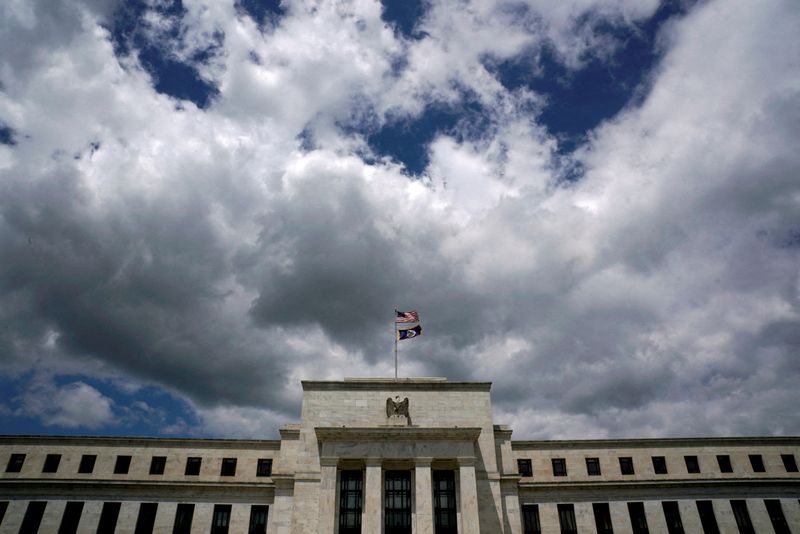(Reuters) -The Federal Reserve held its benchmark overnight interest rate steady in the 5.25%-5.50% range at the end of its Jan. 30-31 policy meeting, but said it would consider reducing it once policymakers are more confident inflation will continue falling to the U.S. central bank's 2% target. Data on inflation, jobs and consumer spending will shape the timing of that decision.
The Fed will hold its next policy meeting on March 19-20. Here is a guide to some of the numbers shaping the policy debate:
INFLATION (PCE released Feb. 29; next release CPI March 12)
The personal consumption expenditures (PCE) price index, which the Fed uses to set its 2% inflation target, increased at a 2.4% annual rate in January, the slowest year-on-year increase in nearly 3 years. Core inflation stripped of volatile food and energy prices rose 2.8%, a slight decline from December's 2.9% reading.
The numbers were in line with expectations and are a boost to Fed officials looking for confirmation that price rises continue to slow.
It also calms concern about a stronger-than-expected jump in the consumer price index in January.
The CPI rose 3.1% on a year-on-year basis in January, down from 3.4% in the prior month, but higher than analysts expected. The core rate excluding food and energy costs, meanwhile, remained unchanged at 3.9% in another reminder that the Fed's inflation battle may last longer than anticipated. Rising shelter costs contributed the bulk of the increase. While the numbers may have been pushed higher by recent data revisions, the reading showed that the decline in housing costs the Fed has been looking for had again been postponed.
RETAIL SALES (Released Feb. 15; next release March. 14):
Retail sales fell more than expected in January, dropping 0.8%. They were pulled down by declines in receipts at auto dealerships and gasoline service stations, and consumer spending was also likely weighed down by winter storms. The decline followed a fairly strong performance over the holiday season and could indicate economic growth will slow sharply this quarter.
If it does, it would finally be a sign the aggressive rate hikes Fed policymakers delivered from March 2022 to July 2023 are trimming overall demand for goods and services in what has up to now been a markedly resilient economy.
EMPLOYMENT (Released Feb. 2; next release March 8):
U.S. firms added 353,000 jobs in January. That was up from the sharply higher revised gain of 333,000 jobs in December.
The unemployment rate remained steady at 3.7%.
Fed officials have become more comfortable with the idea that continued strong job growth could still allow inflation to fall. But the growth in January was nearly double what economists expected, and the job gains occurred across a broad set of industries, dispelling concern that hiring had become too focused.
The latest report may not shift views greatly at the Fed about the coming path of inflation, but it may do little to advance arguments for cutting rates sooner rather than later.
Wage growth jumped to an annual 4.5% after showing signs of cooling. Fed Chair Jerome Powell has said wage growth adjustments could take place over time, and recent strong productivity gains help mute any impact that wage increases may have on prices.
Still, the level in January is well above the 3.0%-3.5% range that most policymakers view as consistent with the Fed's 2% inflation target.

JOB OPENINGS (Released Jan. 30; next release March 6):
Powell keeps a close eye on the U.S. Labor Department's Job Openings and Labor Turnover Survey (JOLTS) for information on the imbalance between labor supply and demand, and particularly on the number of job openings for each person who is without a job but looking for one. The ratio had been falling steadily towards its pre-pandemic level, but has risen in the last two months and remains above 1.4-to-1, higher than the 1.2-to-1 level seen before the health crisis. Other aspects of the survey, like the quits rate, have edged back to pre-pandemic levels.